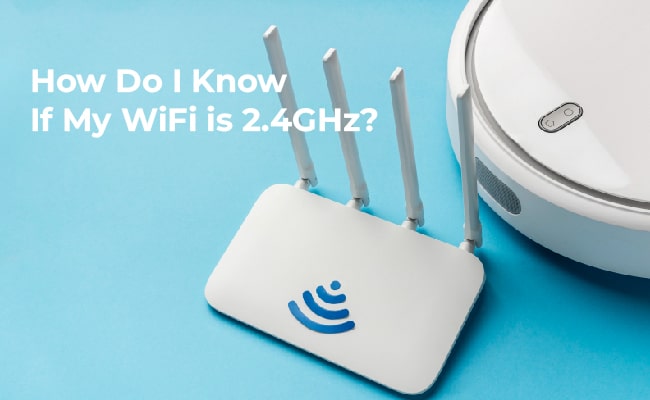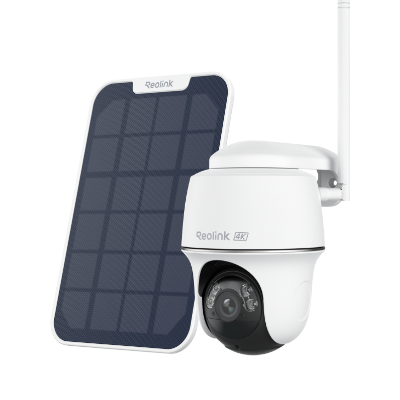How Do I Know If My Wi-Fi is 2.4GHz or 5GHz?

Have you ever asked which frequency band your home Wi-Fi network is broadcasting on, whether it’s 2.4GHz or 5GHz? One should be able to pinpoint the specific wireless frequencies to troubleshoot connectivity problems, attain maximum speeds, and ensure that smart home devices can connect well.
This extensive guide will provide several simple ways to establish whether your router and devices use the 2.4 GHz Wi-Fi range. Finally, let’s look at how do I know if my Wi-Fi is 2.4GHz.
What is 2.4GHz Wi-Fi?
The 2.4GHz frequency band is one of the two primary radio frequency ranges used by Wi-Fi routers and devices.
It operates between 2.4 and 2.4835 GHz and can theoretically maximum speeds up to 600Mbps under the 802.11n Wi-Fi protocol. However, real-world speeds generally top out around 100Mbps.
What GHz is my Wi-Fi? 2.4GHz Wi-Fi has existed since the 802.11b standard was introduced in 1999.
All modern Wi-Fi routers support 2.4GHz connectivity for backward compatibility with older devices. It provides more expansive coverage and penetrates solid objects better than the newer 5GHz networks.
How Do I Know If My Wi-Fi is 2.4GHz? Top 5 Methods
Here are some popular methods to check your Wi-Fi frequency:
On Your Router
The simplest way to confirm your Wi-Fi network’s frequency is to check the specifications on your wireless router or access point. There will often be a label somewhere on the device stating whether it broadcasts at 2.4GHz and/or 5GHz.
You can also log into your router’s administrative interface through a web browser and examine the technical details of your wireless networks. Each network should have clear indicators of which frequency band it uses.
on Windows PC
On a Windows PC, you can view the frequency band for your currently connected Wi-Fi network through the network adapter properties. Follow these steps:
- Click the Start menu and open the Control Panel
- Click Network and Internet > Network and Sharing Center
- Next to Connections, click your Wi-Fi network name
- In the Wi-Fi Status dialog box, click Wireless Properties
- On the General tab, look at the Band section - if it says 2.4GHz, then you’re connected to a 2.4GHz network
on macOS
Macs running macOS can quickly identify your Wi-Fi network’s frequency from the menu bar.
- Click the Wi-Fi icon in the menu bar
- Select your connected network to open the info window
- Look at the Channel field - channels 1-14 indicate 2.4GHz, while 36-165 mean 5GHz
on Android Phones
On an Android smartphone, you can check the Wi-Fi frequency band through your network’s connection details:
- Open Settings and go to Network & Internet > Wi-Fi
- Tap your connected Wi-Fi network name
- Look at the Frequency field - 2.4GHz networks will show a frequency starting with 2
Some Android devices will explicitly state “2.4GHz” or “5GHz” in the Wi-Fi details instead of just showing the frequency.
Using Analyzer App
Wi-Fi analyzer apps provide the most detailed technical insights into mobile device network connections. These apps can identify channel numbers, frequencies, signal strengths, etc.
Wi-Fi Analyzer on Android and NetSpot on iOS are two excellent options. Install one of these apps, and it will immediately display frequency information when you open it while connected to a Wi-Fi network. This provides reliable confirmation of 2.4GHz vs 5GHz.
Is My Wi-Fi 2.4 or 5GHz? How to Check What GHz My WiFi Is?
Wonder how to tell if my Wi-Fi is 2.4 or 5? If you’re still unsure whether your Wi-Fi is 2.4 or 5GHz after checking for direct frequency indicators, here are some critical differences between WLAN 2.4 GHz vs. 5GHz that can help determine which band you’re using:
- Speed - 5GHz networks can deliver faster maximum speeds, often over 400Mbps. If your link rate is below 150Mbps, it’s likely 2.4GHz.
- Range - 2.4GHz signals travel farther and better penetrate walls and obstacles. So, if your router is far away and you have a solid 5GHz signal, it’s likely 2.4GHz.
- Interference - More potential interference from Bluetooth, microwaves, etc., means a higher likelihood of being on the 2.4GHz band.
- Channel - As outlined earlier, Wi-Fi channels 1-14 are for 2.4GHz, while 36-165 are designated 5GHz channels.
- Network Names - Some routers broadcast separate SSIDs for 2.4 vs 5GHz bands, allowing easy distinction between them.
What to Do If I Can’t Find Right Wi-Fi Frequency?
If you still can’t positively identify your Wi-Fi frequency after trying all the methods suggested, here are some next steps:
- Contact your internet service provider or router manufacturer for assistance determining your Wi-Fi network’s frequency band. They have additional tools to analyze your equipment.
- Search the exact model number of your wireless router to find technical specifications that state its supported frequency bands.
- Connect a device like a laptop directly to your router via an Ethernet cable. Then, check the Wi-Fi settings to identify frequency information.
- Purchase a Wi-Fi analyzer device that can detect granular network details that are not visible through software tools.
- Try disconnecting all other nearby wireless gadgets that could cause interference and obscure your network’s frequency.
- Ultimately, you may need to reset your router to factory default settings to reconfigure a new network with known 2.4GHz or 5GHz bands.
How to Connect Mobile Devices to 2.4GHz Wi-Fi
If you need to specifically connect your mobile devices to a 2.4GHz Wi-Fi network, use these tips:
- Check your router admin console to confirm 2.4GHz network name (SSID) if separate from 5GHz.
- Go to Wi-Fi settings on your phone and select the correct 2.4GHz network name to join it.
- If the networks have the same SSID, use advanced options and force 2.4GHz mode if available on your device.
- Disable 5GHz networks on the router if possible, so only 2.4GHz broadcasts.
- Position the phone closer to the router for a stronger 2.4GHz signal than 5GHz.
- Try manually assigning a fixed channel like 6 or 11 instead of automatic channel selection.
For example, you can connect a security camera to your 2.4GHz WiFi, but make sure to choose one that supports this frequency. A great option is the Reolink Argus PT Ultra, a 4K 8MP battery-powered camera that works with both 2.4GHz and 5GHz WiFi.
4k 100% Wire-Free PT Camera
4K 8MP Ultra HD; 5GHz/2.4GHz WiFi; Rechargeable Battery & Solar Powered; 355° Pan & 140° Tilt; IP65 Certified Weatherproof; Clear Night Vision; 2-Way Audio; 122° Wide Viewing Angle.
FAQs
How do I check if my Wi-Fi is 2.4GHz on my iPhone?
Open Settings > Wi-Fi on an iPhone and tap the “i” icon next to your connected network. Look at the Frequency field—2.4GHz will show a frequency starting with 2.4. Some routers explicitly state “2.4GHz.”
How do I make sure my router is on 2.4GHz?
Log into your router admin page and look for 2.4GHz network settings. Ensure the 2.4GHz radio is enabled, the network name (SSID) is broadcasting, and the channel width is set to 20MHz for best performance. Disable “smart connect” features that hide 2.4GHz vs. 5GHz.
How to change Wi-Fi from 5GHz to 2.4GHz?
On your device, manually select the 2.4GHz network name from the list of available networks instead of letting Wi-Fi automatically choose 5GHz. You can also go into advanced options on your device and force 2.4GHz mode. You can also disable the 5GHz radio on your router.
Conclusion
Verifying whether your home Wi-Fi network works at 2.4GHz or 5GHz frequency is very easy, provided you know where to check in your router admin, network settings, and Wi-Fi analytics tools. There are many methods you can use, so there should be no problem confirming the 2.4GHz connectivity.
Understanding one’s network band will help maximize performance, troubleshoot issues, and connect smart home devices. This guide has hopefully simplified how to identify those so you can optimize your wireless landscape. Please let us know if you have any other queries regarding Wi-Fi frequencies!
Search
Subscribe for the Latest Updates
Security insights & offers right into your inbox

